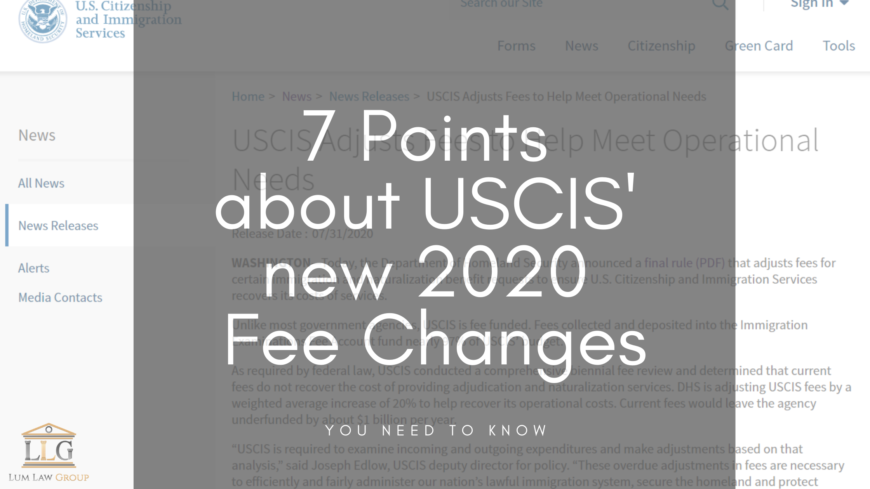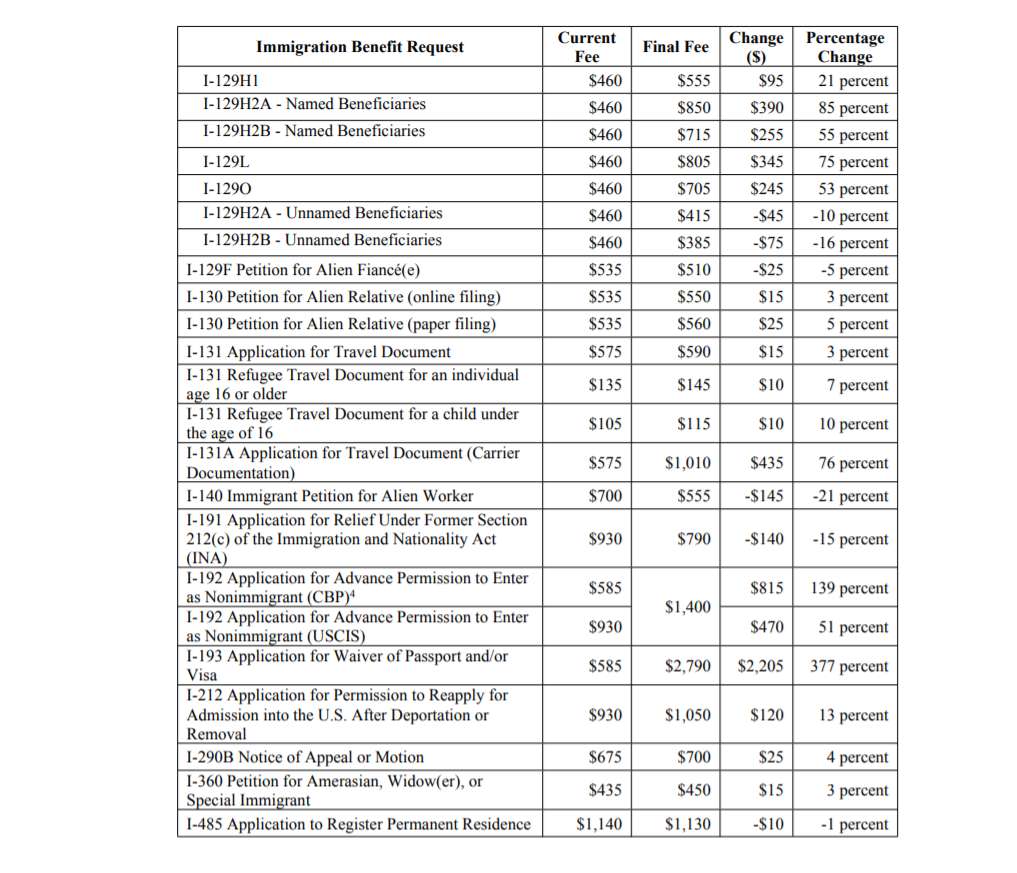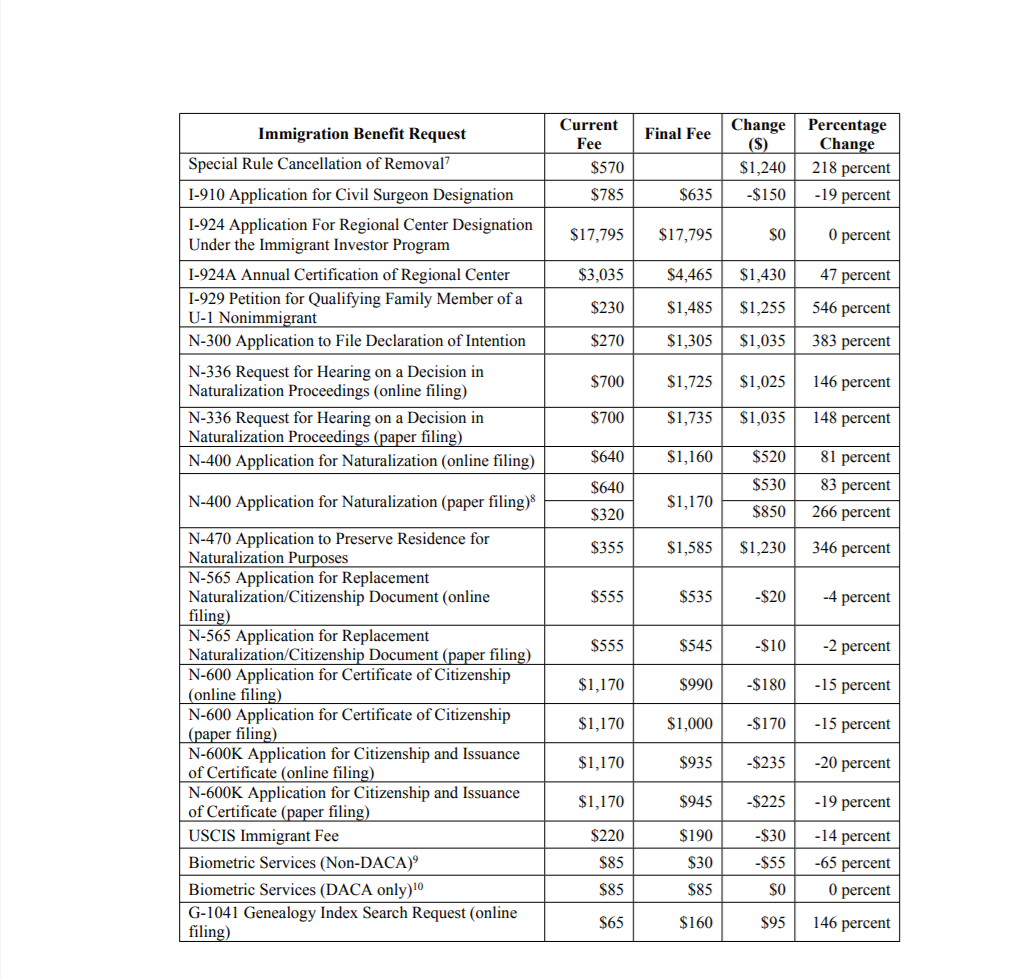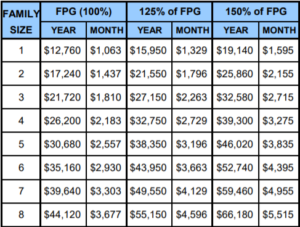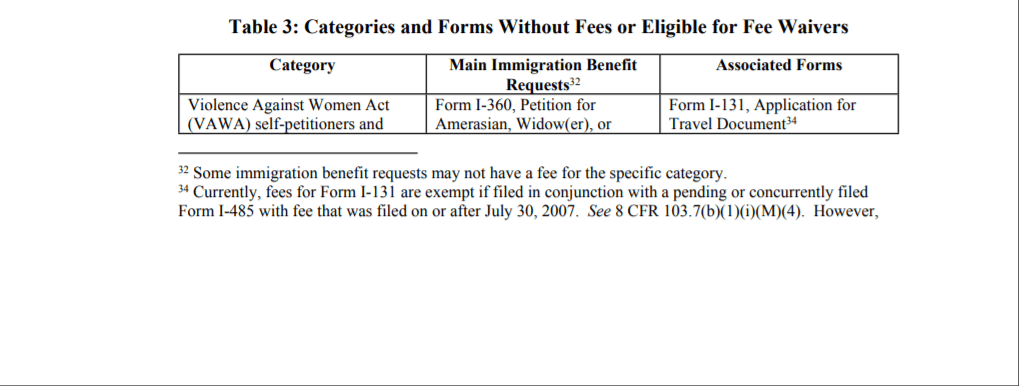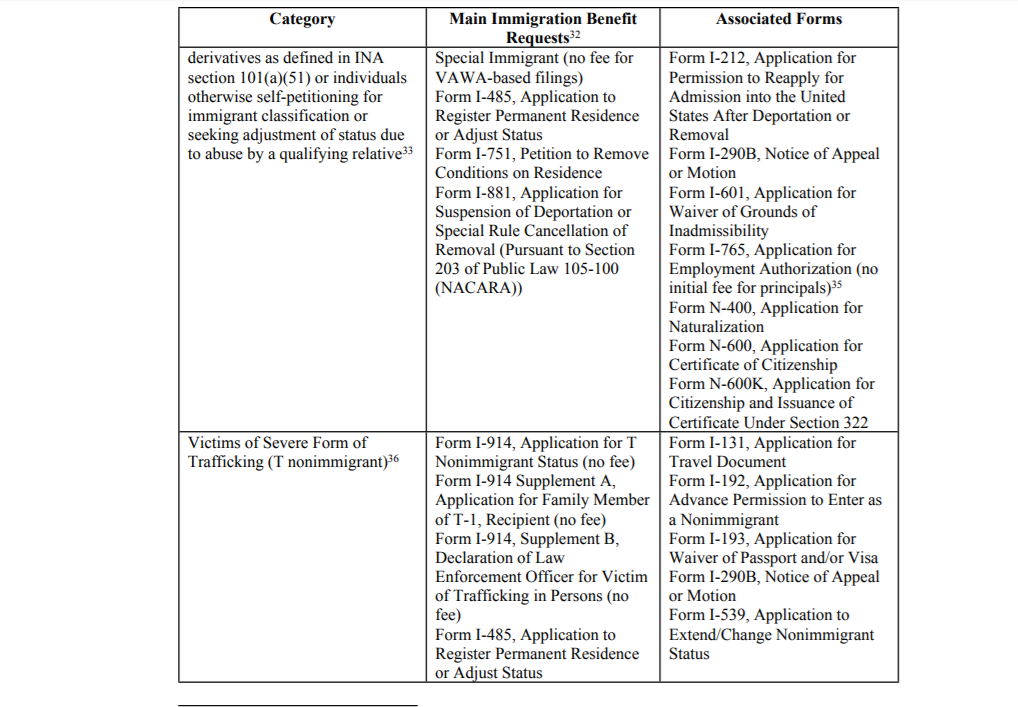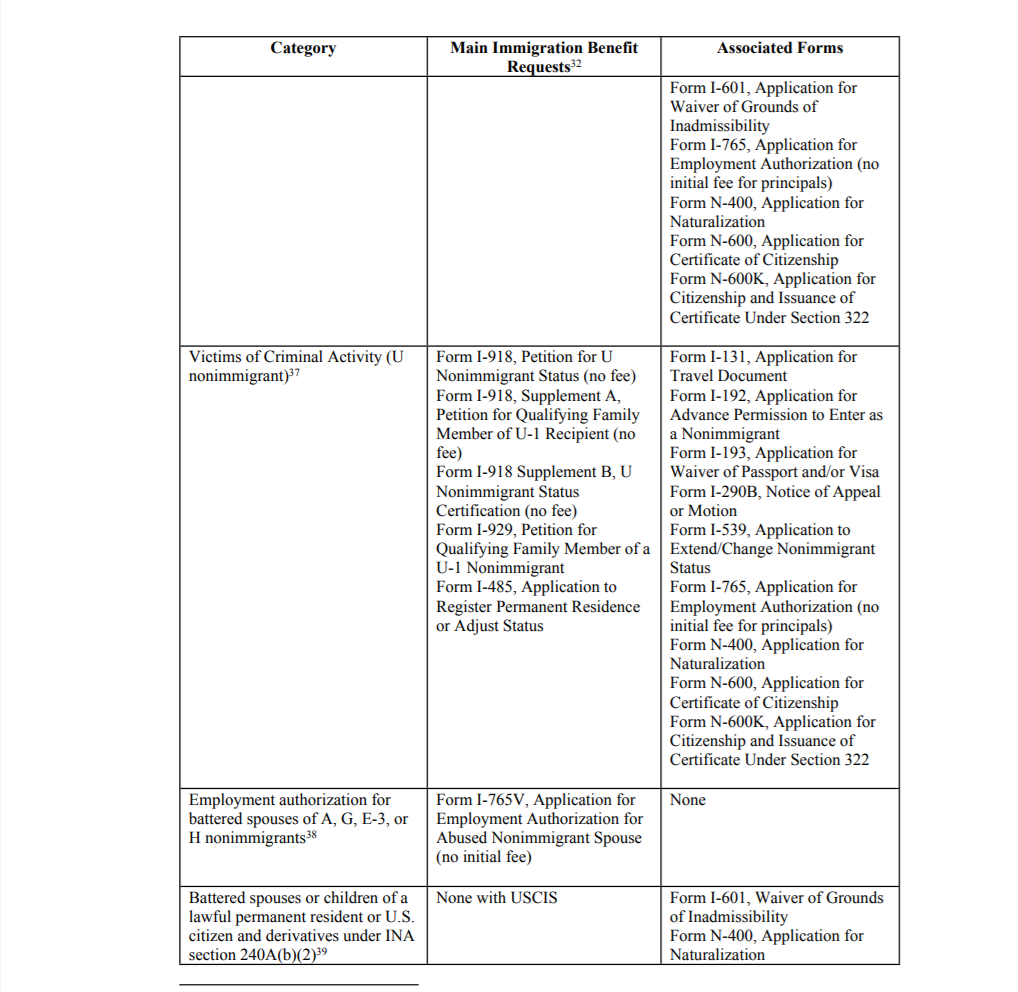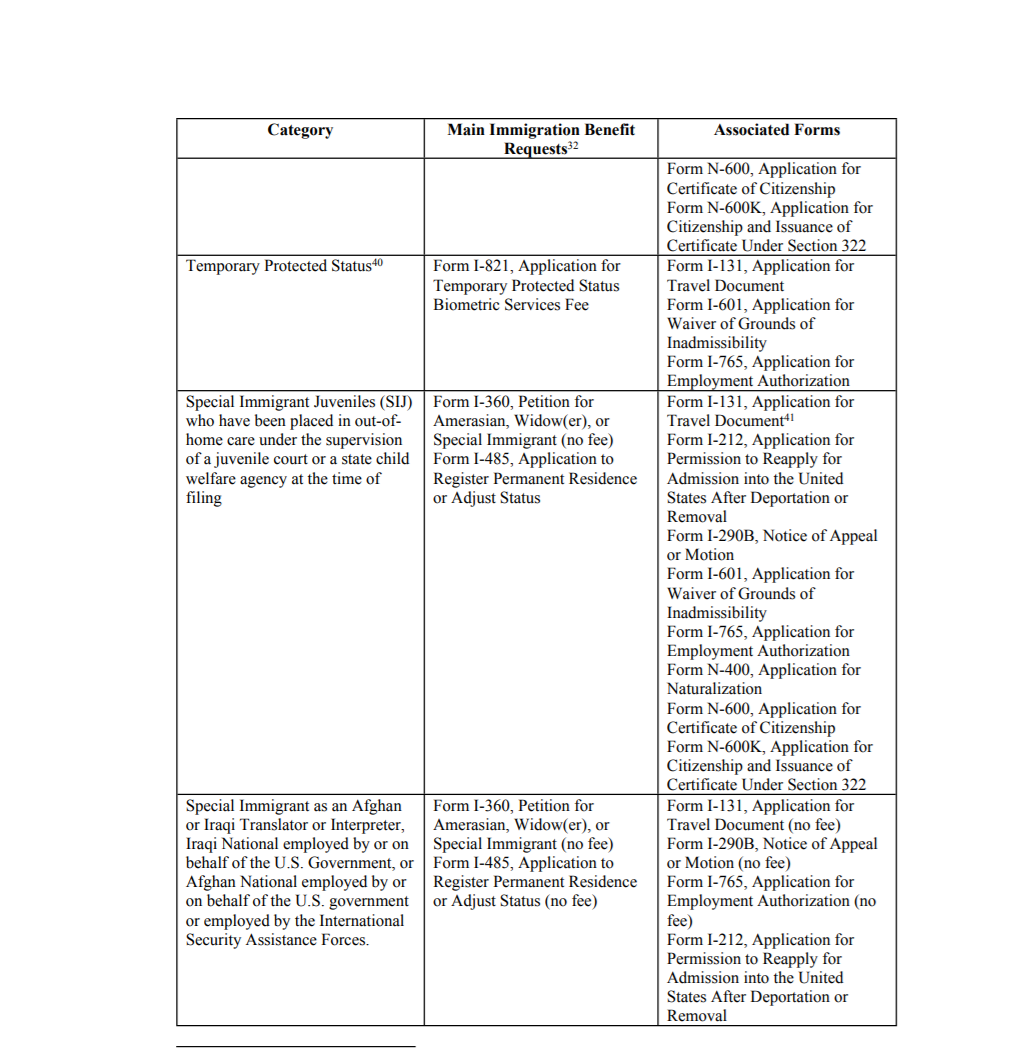7 Points to Know about USCIS’ New 2020 Fee Requirements
On July 31, 2020, the United States Citizenship & Immigration Services (USCIS) released the final rule regarding their proposed changes to immigration benefits and their associated fees. While many news agencies have highlighted the increased costs in fees, and many non-profits have highlighted how asylum applicants would have to pay a fee, the actual rule includes many other provisions that may affect your specific circumstances. Before the rule goes into effect on October 2nd, 2020, find out whether you should begin that application or petition process you’ve been thinking about. In this article, we highlight the five most important points to know about the new 2020 USCIS benefit and fee changes.
1. Form Fees Will Go Up
USCIS has announced many form fees will increase in order to meet their adjudication costs. Here’s a copy of their published list:
2. Asylum Applications Now Have a Cost
In order to file an asylum application, applicants will have to pay a $50 application fee and a biometrics fee of $30.
Application fees will be waived for initial EAD (Form I-765) and green card application (Form I-485) for those who were granted asylum or admitted as refugees. In addition, the fee for refugee travel documents will continue to be reduced.
Note that the rule states:
“At the USCIS Director’s discretion, USCIS may waive or exempt the fee for any
form, including those filed by asylees and refugees. See 8 CFR 106.3(b), (e).”
3. Fee Waivers May not be Available
Not only does the new rule restrict which forms qualify for a fee waiver, it also adjusts the income restriction from 150 percent of the Federal Poverty Guideline (FPG) to 125 percent of FPG. To see what the federal poverty guideline means in 2020, click here.
USCIS is also changing the language in its fee waivers from “inability to pay” to clearly defined requirements, such as requiring W2 wage statements, federal income returns, or IRS certificate of non-filing to prove income. This removes the “means-tested benefit” as proof of low income, meaning proof of qualifying for benefits intended for low income recipients would not be enough to prove fee waiver eligibility, e.g. submitting Medi-Cal benefit card or food stamps statement.
Here’s a list of forms and their fee waivers for your convenience:
4. Applying Online is $10 Cheaper
To encourage online application filing, USCIS will lower the online application fee by $10.00 compared to the fee for the same paper form.
5. Biometrics Fees Changed
Overall finger print fees are reduced from $85 to $30, except for DACA applicants.
6. No Refunds for Fees
While we weren’t aware this was an issue, but the rule clarifies that all USCIS fees are “generally” non-refundable. This includes adjudication fees, H-1B registration, DACA, etc.
7. DACA Fees Remain the Same
Contrary to the proposal, USCIS will not be increasing DACA application and renewal fees, but will maintain the fees that were in effect before September 5, 2017 (no change).
Do you have questions about USCIS new rule regarding fees and benefits? Was there something specific you had expected to read about, but was not highlighted? We would like to hear from you! Leave us a comment or send us an email.

